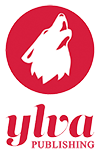One of the things that impressed us most about our visit to Leipzig was the Museum for Printing Arts, which offers interesting insights into the history of letterpress printing. Unlike many other museums, this museum doesn’t just let you admire their one hundred historical machines and presses from a distance. You can see them in action and even try for yourself how books were printed in past centuries, before digital printing made it possible to publish books with a simple mouse click.
Roland Müller, who worked as a typesetter in the past, filled us in on the history of the “black arts.”
 The first step in printing a book was typesetting. The museum shows the development of typesetting from hand-setting to digital printing.
The first step in printing a book was typesetting. The museum shows the development of typesetting from hand-setting to digital printing.
Hand-setting: From the invention of moveable types by Johannes Gutenberg around 1450 until the end of the nineteenth century, lead types were cast  manually in the type foundry. The types were then sorted into wooden job cases with compartments for every letter. The typesetter took the letters from the case one by one and arranged them to a line in a composing stick. A number of lines were bound together to make up a page image called “forme.”
manually in the type foundry. The types were then sorted into wooden job cases with compartments for every letter. The typesetter took the letters from the case one by one and arranged them to a line in a composing stick. A number of lines were bound together to make up a page image called “forme.”
 Machine setting: The Linotype machine was invented in 1886. It combined type setting and type foundry into one step, which no longer had to be done by hand. The operator entered text on a keyboard, while often correcting mistakes that the editor had missed. Each keystroke releases a matrix, a mold for the letter, from the magazine. The matrices are assembled in a line, which
Machine setting: The Linotype machine was invented in 1886. It combined type setting and type foundry into one step, which no longer had to be done by hand. The operator entered text on a keyboard, while often correcting mistakes that the editor had missed. Each keystroke releases a matrix, a mold for the letter, from the magazine. The matrices are assembled in a line, which  is then cast in a single piece. Since the machine casts an entire line of type at a time, it was named Linotype. Using this method, the operator could set about 6,000 letters per hour. Many printers used Linotypes until the introduction of desktop printing in the 1980s.
is then cast in a single piece. Since the machine casts an entire line of type at a time, it was named Linotype. Using this method, the operator could set about 6,000 letters per hour. Many printers used Linotypes until the introduction of desktop printing in the 1980s.
Since it might sound a little complicated, here’s a video explaining the details and here’s a shorter demonstration of how the Linotype looks in action.
 Digital typesetting: With the introduction of the Apple Macintosh, the Apple LaserWriter printer, and the layout software PageMaker in 1985, setting and layout could be done digitally.
Digital typesetting: With the introduction of the Apple Macintosh, the Apple LaserWriter printer, and the layout software PageMaker in 1985, setting and layout could be done digitally.
Once the type is set, the printing foll ows. Mr. Müller showed us how a printing press worked in the fifteenth to nineteenth century. First, the text blocks were inked using two pads mounted on handles. These pads were covered with dog leather since dogs don’t have any perspiratory glands where remnants of ink could get stuck.
ows. Mr. Müller showed us how a printing press worked in the fifteenth to nineteenth century. First, the text blocks were inked using two pads mounted on handles. These pads were covered with dog leather since dogs don’t have any perspiratory glands where remnants of ink could get stuck.
 Then a sheet of paper was placed on the inked type. This part of the printing process was most often done by women since they have smaller hands and better fine motor skill
Then a sheet of paper was placed on the inked type. This part of the printing process was most often done by women since they have smaller hands and better fine motor skill s.
s.
The bed was then rolled under the platen, a flat metal plate. When a lever was pulled, the platen was lowered onto the inked form. Then the bed was moved back to its original position, and the paper was removed and hung up to dry.
A big thank-you to Roland Müller for the guided tour of the museum!


Thank you for sharing this wonderful museum and all the history with all of us throughout the world…Gracias!!!
Very cool!